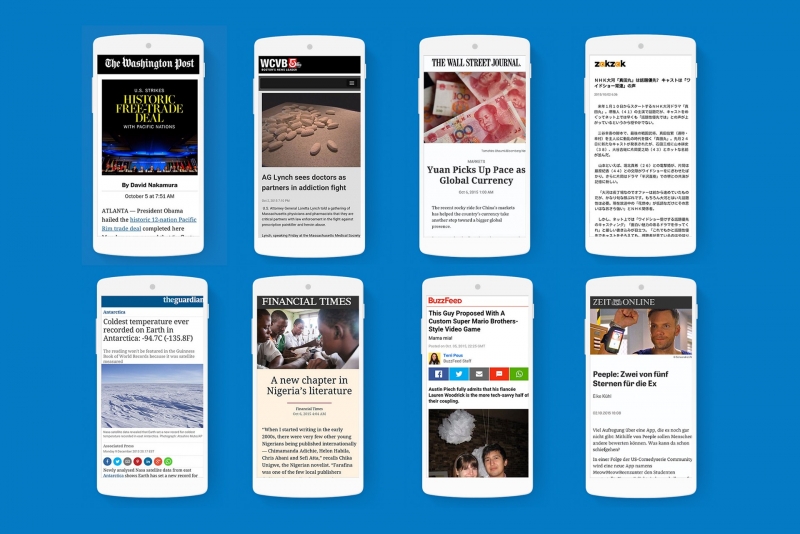
Google has announced a new open-source project called Accelerated Mobile Pages (AMP) that will enable articles from news publications to load almost instantly on smartphones and tablets. Some of the 30 publishers already taking part in the initiative include Twitter, The New York Times, the Guardian, BuzzFeed, Vox Media, Pinterest and LinkedIn.
Google said that AMP will drastically speed up article loading times on mobile devices by caching the webpage ahead of time. This is done using the company’s high-end servers, which can handle 6 million queries a second. Another method AMP uses to bolster mobile web browsing is by not loading an image or a video until a user scrolls down to it, allowing the top of a page to load much faster. And with much of the Javascript code used on normal webpages absent, articles should not only appear faster but use less battery power.
"The Web today, particularly in a mobile environment, is not really fully satisfying users' expectations. It's not as fast as it should be. Pages load slowly, sometimes erratically. It's not ideal," said Richard Gingras, Google's head of news.
While AMP still allows publishers to tap into the same ad network as before, certain types of ads, such as pop-ups and images that move as users scroll the page, will not be displayed.
Over the coming months, Google will start to display a carousel list of AMP stories at the top of some search results. Tapping on one will instantly load it, and users can move to between similar stories on different websites by swiping left or right.
The service is seen as Google’s answer to Facebook’s Instant Articles and the new iOS 9 Apple News feature, both of which offer publishers a way to load their articles faster and therefore keep the audience sticking around longer. The announcement follows Twitter revealing its ‘Moments’ news feature yesterday.
You can find the AMP project on Github.
https://www.techspot.com/news/62364-google-faster-mobile-amp-project.html